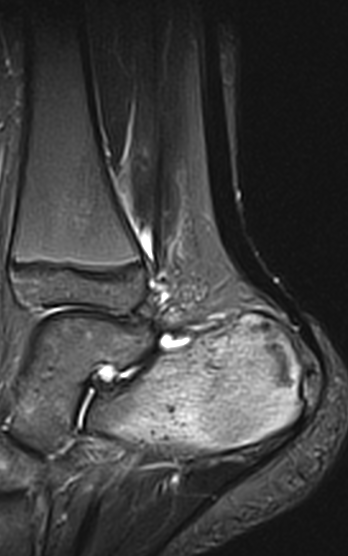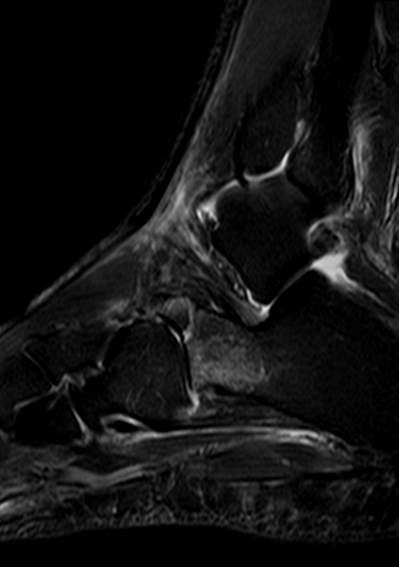Tibial stress fractures are common
The earliest manifestation is 'Shin Splints' which can have normal imagng or show nly vague non specific soft tissue oedema
They are graded as:
• Grade 1 periosteal bone oedema with normal marrow signal
• Grade 2 marrow oedema on fluid sensitive sequences
• Grade 3 marrow oedema also visible on T1 images
• Grade 4a intra cortical signal change
• Grade 4b linear cortical fracture line
Stress fractures of the navicular are common in track and field athletes
Compression of the medial column is thought to underlie the injury by biomechanically
A sagittal orientation is typical
The central part of the bone is typically involved
There are 3 grades
• Grade 1 involves the dorsal cortex only
• Grade 2 extends into the bone
• Grade 3 involves both dorsal and plantar cortices
X-rays are frequently negative
MRI and CT are more useful for diagnosis
They can be difficult to treat and some require surgical stabilisation
Metatarsal stress fracture should be considered in the differential diagnosis of Morton's neuroma or Freiberg's disease
X-rays are commonly used initially but are frequently negative or subtle findings are overlooked
Ultrasound can detect the early peri osteal changes
MRI is more sensitive for bone oedema.
Stress fractures of the os calcis occur due to opposition between weight-bearing heel strike and the pole of the Achilles tendon
Symptoms can mimic Achilles tendinopathy
The posterior tuberosity is the most common location
Stress fractures and other bones not infrequently occur simultaneously
Other locations where stress fractures occur include
• The proximal part of the 5th metatarsal
• The base of the 2nd 3rd and 4th metatarsals
• The medial malleolus
• The cuboid and cuneiform bones



